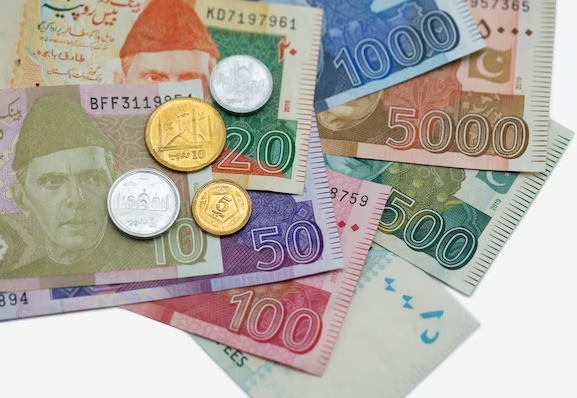When it comes to understanding a country’s economy, its national currency plays a crucial role. In the case of Chile, the Chile National Currency, Peso, takes center stage. The Chilean Peso, symbolized as “CLP” and denoted by the currency code “CL$, is the official currency of Chile. In this article, we will delve into the fascinating world of the Chilean Peso, exploring its history, design, denominations, security features, economic significance, and much more.
Chile, a country located in South America, is renowned for its diverse landscapes, vibrant culture, and thriving economy. To navigate through Chile’s economic landscape, it is essential to familiarize oneself with its national currency, the Chilean Peso.
History of the Chile National Currency
The origins of the Chilean Peso can be traced back to the Spanish colonization era. During this time, the Spanish colonial authorities introduced the real as the official currency. Over the years, the currency underwent several transformations, leading to the establishment of the Chilean Peso in 1817. Since then, the Chilean Peso has been the backbone of Chile’s financial system.
Design and Symbolism of Chilean Peso
The Chilean Peso banknotes showcase the nation’s rich cultural heritage and natural wonders. Each denomination features prominent figures from Chilean history, iconic landmarks, and indigenous symbols. These designs pay homage to the country’s indigenous roots and serve as a testament to its diverse identity.
Denominations and Coins
The Chilean Peso is divided into several denominations, including banknotes and coins. Banknotes are available in denominations of 1,000, 2,000, 5,000, 10,000, and 20,000 Pesos, while coins are available in 1, 5, 10, 50, 100, and 500 Pesos. This range of denominations allows for efficient transactions and meets the needs of various economic activities.
Security Features of Chile National Currency
To ensure the integrity and authenticity of the currency, the Chilean Peso banknotes incorporate advanced security features. These features include watermarking, security threads, tactile marks for the visually impaired, and intricate designs that are difficult to counterfeit. These measures provide confidence to both the citizens and visitors who engage in financial transactions using the Chilean Peso.
Exchange Rates and Conversion
The value of the Chilean Peso fluctuates in response to various factors, including supply and demand dynamics, economic performance, and global market conditions. Exchange rates play a significant role in facilitating international trade and travel. To convert Chilean Pesos to other currencies or vice versa, individuals can use exchange services offered by banks, currency exchange offices, or online platforms.
Importance of Chilean Peso in the Economy
The Chilean Peso serves as a vital instrument in the functioning of Chile’s economy. It facilitates transactions, both domestically and internationally, and acts as a store of value. The stability and credibility of the Chilean Peso contribute to investor confidence and attract foreign direct investment, fostering economic growth and development.
Role of Central Bank in Managing Chilean Peso
The Central Bank of Chile, known as the Banco Central de Chile, is responsible for the management and regulation of the Chilean Peso. The bank formulates monetary policies, monitors inflation rates, and implements measures to maintain the stability of the currency. Through its interventions, the Central Bank strives to ensure a conducive environment for economic prosperity.
Factors Influencing the Value of the Chilean Peso
Several factors impact the value of the Chilean Peso. Economic indicators such as inflation rates, interest rates, fiscal policies, and trade balances all contribute to the currency’s fluctuation. External factors, including global commodity prices, geopolitical events, and investor sentiment, also influence the value of the Chilean Peso in the international exchange market.
Impact of Inflation on Chilean Peso
Inflation plays a significant role in shaping the value of the Chilean Peso. The Central Bank employs inflation targeting as a monetary policy tool to maintain price stability. By managing inflation rates effectively, the bank aims to safeguard the purchasing power of the Chilean Peso and promote economic stability.
Advantages and Disadvantages of the Chilean Peso
The Chilean Peso offers several advantages, such as stability, ease of use, and wide acceptance within the country. It enables efficient transactions and provides a reliable medium of exchange. However, fluctuations in exchange rates and potential currency risks pose challenges to international travelers and businesses engaging in cross-border transactions.
Use of Chilean Peso in Everyday Life
The Chilean Peso is an integral part of everyday life for the people of Chile. It is used for various purposes, including purchasing goods and services, paying bills, and saving for the future. Whether in bustling markets, shopping centers, or online platforms, the Chilean Peso is the primary mode of conducting financial transactions within the country.
International Recognition of Chile National Currency
Although the Chilean Peso may not be as widely recognized as some major international currencies, it holds its importance in the global economic landscape. As Chile continues to thrive as a popular tourist destination and an attractive investment hub, the recognition and acceptance of the Chilean Peso are steadily increasing worldwide.
Conclusion
In conclusion, the Chilean Peso stands as a symbol of Chile’s rich heritage, economic stability, and cultural diversity. As the official currency of the country, it plays a vital role in facilitating domestic and international transactions, supporting economic growth, and preserving the purchasing power of the people.
FAQs (Frequently Asked Questions)
- Can I use the Chilean Peso outside of Chile?
While the Chilean Peso may not be widely accepted outside of Chile, some currency exchange services or banks in other countries may facilitate its conversion.
- What are the security features of the Chilean Peso?
The Chilean Peso banknotes incorporate advanced security features, including watermarking, security threads, and tactile marks for the visually impaired, to ensure authenticity and prevent counterfeiting.
- How can I convert Chilean Pesos to other currencies?
You can convert Chilean Pesos to other currencies by utilizing exchange services provided by banks, currency exchange offices, or online platforms.
- Does the value of the Chilean Peso fluctuate?
Yes, the value of the Chilean Peso can fluctuate in response to various factors, including economic indicators, global market conditions, and investor sentiment.
- What is the role of the Central Bank in managing the Chilean Peso?
The Central Bank of Chile is responsible for managing the Chilean Peso, formulating monetary policies, and implementing measures to maintain the stability of the currency.
References
- “Chilean Peso” – Banco Central de Chile.
- “History of Chilean Peso” – InvestChile.
- “Chile: Economy” – The World Bank.
- “Chilean Peso: Banknote Designs and Symbolism” – Numista.
- “Chilean Peso: Coins and Denominations” – Chile Mint.

